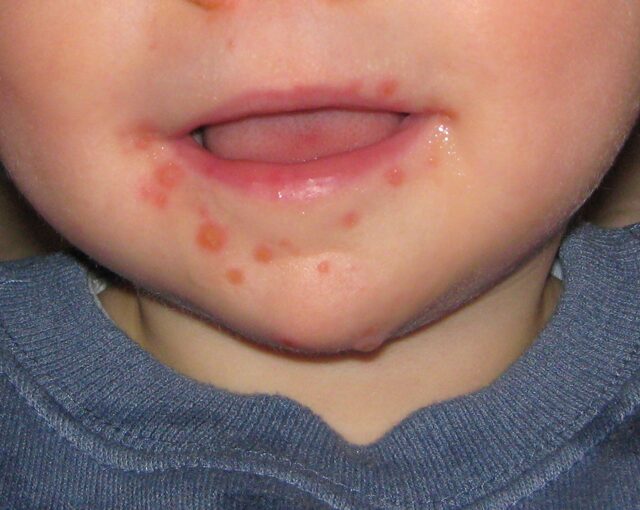Hand-Foot-and-Mouth Disease: Symptoms, Causes, Treatment
What are the symptoms of hand-foot-and-mouth disease?
Hand, foot, and mouth disease (HFMD) is a viral infection that commonly affects infants and children. It is caused by several types of viruses, most commonly the coxsackievirus. The symptoms of HFMD typically include:
- Fever: HFMD often begins with a fever, which is usually mild but can occasionally be high.
- Sore throat: Many people with HFMD develop a sore throat, which can make swallowing difficult.
- Mouth sores: One of the hallmark symptoms of HFMD is the presence of painful sores in the mouth. These sores are usually small, red spots that can develop into blisters. They often appear on the gums, tongue, and inside of the cheeks.
- Skin rash: HFMD can cause a rash of red spots or bumps on the skin. The rash is most commonly seen on the palms of the hands, soles of the feet, and buttocks. The rash may be accompanied by blisters.
- Irritability: Infants and young children with HFMD may be irritable due to the discomfort caused by the mouth sores and rash.
- Loss of appetite: The mouth sores can make eating and drinking painful, leading to a loss of appetite.
- Fatigue: Some people with HFMD may feel tired or lethargic.
The symptoms of HFMD usually resolve on their own within 7 to 10 days. However, it is important to seek medical attention from a healthcare provider if you or your child experience severe symptoms, such as difficulty breathing, dehydration, or high fever.
What are the causes of hand-foot-and-mouth disease?
Hand, foot, and mouth disease (HFMD) is caused by several types of viruses, most commonly the coxsackievirus. These viruses are part of the enterovirus group, which also includes polioviruses and echoviruses. HFMD is highly contagious and spreads through close personal contact, as well as through contact with contaminated surfaces or objects.
The viruses that cause HFMD are typically found in the saliva, nasal mucus, blister fluid, and feces of infected individuals. The virus can spread from person to person through:
- Direct contact: Close contact with an infected person, such as hugging, kissing, or sharing utensils, can spread the virus.
- Indirect contact: Touching surfaces or objects that are contaminated with the virus, such as toys, doorknobs, or countertops, and then touching the face, mouth, or eyes can lead to infection.
- Respiratory secretions: The virus can also be spread through respiratory droplets expelled when an infected person coughs or sneezes.
HFMD is most common in children under the age of 5, but it can also occur in older children and adults. The virus is more likely to spread in settings where young children are in close contact with each other, such as daycare centers and schools.
What is the treatment for hand-foot-and-mouth disease?
There is no specific treatment for hand, foot, and mouth disease (HFMD) caused by viruses. The infection is usually mild and self-limiting, and most people recover without any specific medical treatment. However, there are ways to manage the symptoms and help alleviate discomfort:
- Pain relief: Over-the-counter pain relievers such as acetaminophen (Tylenol) or ibuprofen (Advil, Motrin) can help reduce fever and alleviate pain from mouth sores and throat pain. Aspirin should not be given to children due to the risk of Reye’s syndrome.
- Fluids: It’s important to avoid dehydration, especially if swallowing is painful. Offer plenty of fluids such as water, diluted fruit juices, or oral rehydration solutions to prevent dehydration.
- Soft, cool foods: Eating soft, cool foods such as yogurt, ice cream, or smoothies can help soothe mouth sores and make eating more comfortable.
- Rest: Getting plenty of rest can help the body recover and boost the immune system.
- Avoid irritants: Avoid acidic or spicy foods that can irritate mouth sores.
- Good hygiene: Practice good hygiene, such as washing hands frequently with soap and water, to prevent the spread of the virus to others.
In most cases, symptoms of HFMD will improve within 7 to 10 days without medical treatment. However, if you or your child experience severe symptoms, such as high fever, difficulty swallowing, dehydration, or if symptoms do not improve, it is important to seek medical attention.




